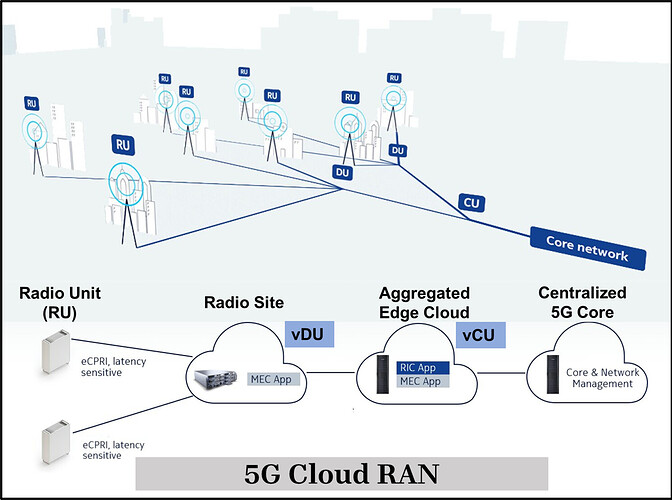-
My friend: Hi Ibrahim, I have a question for you.
- Me: You are most welcome, go ahead.
-
My friend: I am hearing a lot that Cloud RAN will be beneficial for 5G and add value, but how can this happen?
- Me: As you know Cloud RAN means disaggregation of HW from SW which means operators can use any COTS HW from any company like Dell, HP, etc. and on top of it using the CU and DU as SW functions from telco vendors such as Nokia, Ericsson, etc., which means a more cost-effective solution than the purpose-built RAN in which the HW was manufactured and designed only for this RAN function, as the COTS HW is much cheaper than the purpose-built HW, and with the massive deployment of 5G sites around the world, so Cloud RAN implementation will be more favorable solution for operators.
-
My friend: So, what else Cloud RAN can add?
- Me: Cloud RAN will help in implementing Centralized RAN (C-RAN) and this will be a big move in the RAN architecture evolution as instead of having one baseband module installed at each radio site, you will have one centralized location, which can be any data center owned by the operator or any Edge location, where the CU only or the CU& DU will be there and implemented as a SW functions over HW servers and this will be like a pool of resources which many radio sites will be connected to and share all these resources and I mean by resources here; HW processing capacity, SW license for users, throughput license, etc. So, if you remember when a problem is happening at any site due to traffic increase and you have to add extra HW or add new SW license due to users increase, and this is taking time to detect and then implement. But with Cloud RAN, all this can be automated and implemented much faster than before.
-
My friend: But can Cloud RAN enhance the 5G radio performance?
- Me: Absolutely and let me give you one example. If you implement the 5G Cloud RAN with Centralized RAN concept, assuming only CU is centralized and DU is at radio site, so one CU will handle many radio cells. So, as per 3GPP, one 5G site is defined as one CU connected to multiple DUs, which means for example if you connect 200 cells to one CU, that means all these 200 cells are considered under one site and as you know that intra-site Handover Success Rate is higher than inter-site Handover Success Rate which means better mobility performance between all these 200 cells and more sustainable calls as less drops will happen which is really amazing. Of course, the enhancement can further increase when DU is centralized as well. And you can’t implement the Centralized RAN without Cloud RAN to provide you with the flexibility, agility, and scalability you need.
-
My friend: Thank you very much, you made it very clear.
- Me: You are most welcome.
LinkedIn: ![]()
